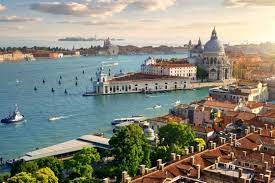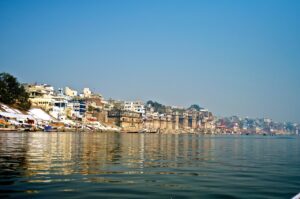
Italy, with its timeless charm, has always been a dream destination for Indian travelers. From the romance of Venice to the art-filled streets of Florence, and from the ancient ruins of Rome to the colorful coastal villages of Cinque Terre, the country offers experiences that are both culturally rich and visually stunning. If you’re planning to travel from India to Italy, one of the first questions that comes to mind is: “What could be the cost of an Italy trip from India?”
While it’s difficult to pin down a fixed number since travel costs vary depending on many factors, this guide will help you understand the elements that shape the overall expense of your Italian holiday. By breaking down the trip into components like flights, accommodation, transport, food, attractions, and seasonal differences, you’ll get a clearer picture of how to plan according to your budget and preferences.
1. Airfare: The First Big Component
Flights usually take up a major share of any international trip budget. The cost of flying from India to Italy depends on several aspects:
- Departure City in India: Major hubs like Delhi, Mumbai, and Bengaluru often have better deals compared to smaller airports.
- Destination in Italy: Rome, Milan, and Venice are the most common international entry points. Direct flights are rare, so you may find one-stop options through the Middle East or Europe.
- Booking Time: Last-minute bookings tend to be more expensive. Advance planning usually secures better rates.
- Season: Airfares spike during peak tourist seasons such as summer (June to August) and Christmas/New Year holidays.
A useful tip is to use flight comparison platforms and flexible date searches to find the most affordable options.
2. Accommodation Options Across Italy
Where you stay significantly impacts your trip’s budget. Italy offers diverse accommodation types:
- Luxury Hotels & Resorts: Found in Rome, Florence, Amalfi Coast, and Venice for travelers seeking indulgence.
- Mid-Range Hotels & Boutique Stays: Ideal for families or couples looking for comfort without going overboard.
- Budget Hostels & Guesthouses: Backpackers often prefer hostels or dorm-style accommodations in cities like Milan or Naples.
- Vacation Rentals & Airbnb: Perfect for groups or long stays, giving a more local experience.
The choice of city also matters. Rome, Venice, and Florence tend to have higher accommodation rates compared to less touristy regions like Bologna or Turin.
3. Local Transportation Costs
Getting around Italy is both convenient and enjoyable. Transportation choices influence your overall expenditure:
- Trains: Italy has an extensive and efficient railway system. High-speed trains like Trenitalia and Italo connect major cities in just a few hours. Regional trains are cheaper but slower.
- Buses: Useful for intercity travel and reaching smaller towns.
- Car Rentals: Driving along Tuscany’s countryside or the Amalfi Coast is a popular option, though fuel and tolls can add up.
- Public Transport: Metro, trams, and buses in cities are affordable. A daily or multi-day pass often provides the best value.
- Taxis & Ride-Sharing: Convenient but usually costlier than public transit.
Choosing the right mix of transportation ensures not only savings but also a more authentic Italian experience.
4. Food & Dining Experiences
Italian cuisine is a highlight of any trip! From wood-fired pizzas to handmade pasta, every region boasts unique flavors. Your dining budget depends on:
- Fine Dining: Michelin-starred restaurants offer gourmet experiences.
- Casual Dining & Trattorias: Mid-range eateries with authentic meals at reasonable prices.
- Street Food & Cafés: Budget-friendly options include paninis, arancini, and gelato.
- Self-Catering: If staying in rentals, you can shop at local markets and cook your own meals.
Exploring food in Italy can range from luxury experiences to budget-friendly eats, allowing flexibility no matter what your spending plan is.
5. Sightseeing & Entry Fees
Italy’s main allure is its incredible cultural and historical sites. While many attractions are free, some iconic landmarks have entry fees:
- Rome: Colosseum, Roman Forum, Vatican Museums, Sistine Chapel.
- Florence: Uffizi Gallery, Accademia (home to Michelangelo’s David), Duomo climb.
- Venice: Doge’s Palace, St. Mark’s Basilica (some sections free, others paid).
- Milan: The Last Supper, Milan Cathedral rooftop.
- Naples & Pompeii: Ancient ruins and archaeological sites.
Passes like the Roma Pass or Firenze Card can help save money if you plan to visit multiple attractions in one city.
6. Duration of the Trip
The number of days you plan to stay plays a crucial role in estimating the total expense. A week-long trip will naturally cost less than a two-week itinerary. However, longer stays sometimes reduce average per-day costs as fixed expenses like airfare get spread out.
7. Seasonal Variations in Travel Costs
- Peak Season (June–August): High airfare and accommodation rates, crowded attractions.
- Shoulder Season (April–May, September–October): Moderate prices, pleasant weather, fewer tourists.
- Low Season (November–March): Lowest accommodation rates, but colder weather; fewer crowds except during Christmas and New Year.
Traveling during the shoulder season often provides the best balance between affordability and experience.
8. Shopping & Souvenirs
Shopping is another aspect that affects your budget. Italy is famous for fashion (Milan), leather goods (Florence), glass (Venice), and ceramics (Amalfi). Whether you indulge in high-end designer labels or pick small souvenirs, setting aside a budget ensures you don’t overspend.
9. Travel Insurance & Miscellaneous Expenses
Travel insurance is a must for Schengen visa applications, covering medical emergencies and trip cancellations. Beyond that, you should also account for expenses like SIM cards, local transport cards, tips, and personal activities.
10. Smart Ways to Manage Your Italy Trip Budget
- Plan and book flights early.
- Opt for budget airlines for intra-Europe travel.
- Mix high-end meals with casual dining to balance costs.
- Use train passes for multi-city itineraries.
- Stay in less touristy towns for better accommodation deals.
- Travel during shoulder season for value-for-money experiences.
Final Thoughts
So, what influences the Italy trip cost from India? The answer lies in your choices. Airfare, accommodation style, travel season, food habits, sightseeing plans, and shopping preferences all shape the overall budget. The beauty of Italy is that it caters to every kind of traveler—whether you’re a backpacker seeking affordability or a luxury seeker wanting indulgence.
Instead of focusing on a fixed cost, it’s wiser to understand these factors and customize your journey based on your preferences. That way, you not only manage your expenses but also create an unforgettable Italian adventure that matches your style.
Italy is more than just a destination—it’s an experience filled with history, art, romance, and culture. With the right planning, your dream of exploring Italy from India can become a reality without unnecessary stress over the budget.


